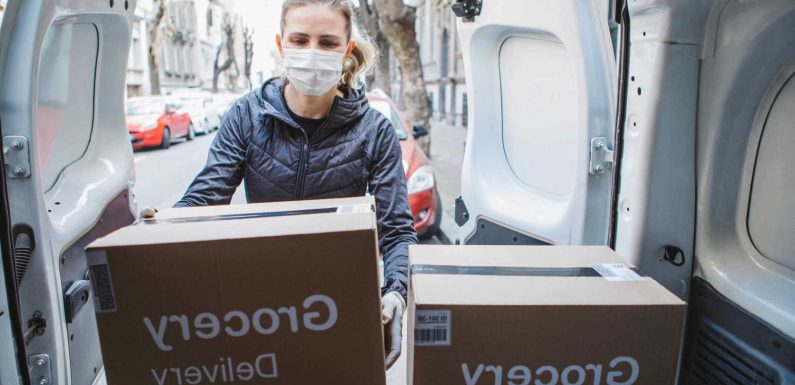
AMERICANS are planning on using home deliveries as their primary form of shopping – even post-pandemic, a new study has revealed.
Going to a physical store may be a thing of the past.
According to a new survey of 2,000 Americans, 56 percent expect to use home delivery more in the future – and of those, 83 percent think there will come a time when home delivery is their primary method of shopping.
And they’ll expect to see these changes soon: for these respondents, 50 percent believe that shift will occur within the next five years.
Seven in 10 respondents are using home delivery more now than ever before due to the Covid-19 pandemic, and the same number (70 percent) have been using it more frequently, specifically for necessities.
But while the pandemic may have changed Americans’ behaviors, these new habits aren’t going away anytime soon; results found 69 percent plan to continue shopping online, even after the pandemic ends.
Commissioned by HomeValet and conducted by OnePoll, the study also found people want to see changes in the home delivery system if they’re going to make it their permanent way of shopping.
Respondents said they would like to see more control over delivery times (46 percent), secure package delivery boxes (42 percent), and auto-replenishment of regular online purchases (34 percent).
That’s in addition to temperature-controlled "boxes" (32 percent) and verified deliveries they don't need to sign for (31 percent).
"Before the advent of delivery and rise of e-commerce, when consumers shopped exclusively in stores, they didn’t need a safe place to receive deliveries at home," said HomeValet Co-Founder and CEO John Simms.
"The changes in consumer habits over the last 30 years have made it clear that the front porch is now the de-facto loading dock for consumers, subject to a host of new delivery dilemmas and vulnerabilities.
"While companies seek to address the last mile, or rather last yard, of delivery they must rethink the existing system, which was not designed to accommodate e-commerce and modern-day consumer habits."
Unfortunately, respondents are still experiencing issues with home delivery, and it’s causing some to back out of their purchases.
Results found 57 percent are guilty of “cart abandonment,” where they leave items sitting in online shopping carts – and respondents are most likely to abandon clothing (56 percent), household supplies (49 percent), and groceries (44 percent).
Of those who have items saved in their virtual shopping carts, the average respondent has 11 items waiting for them, and they typically abandon their purchases four times a month.
A lack of available delivery windows was the top reason Americans abandon their carts (45 percent), and the same number worried their items would be delivered when they’re not home.
Results found 35 percent of respondents have held off committing to a purchase because of concerns about porch pirates. This may be because 41 percent of respondents have had a package stolen or gone missing after it was marked as delivered over the past year.
During that time, 45 percent received a “missed delivery” notice for a package, and 42 percent had a package damaged by the weather when it was left outside.
“On the porch of homes, even those ‘fortified’ and remotely monitored with sophisticated IoT security devices, we see packages and groceries waiting to be retrieved by a homeowner returning from work, errands or children’s sports left susceptible to spoilage, damage, and porch piracy,” said Simms.
“Results from the survey confirm what we’ve seen: people increasingly experience new challenges resulting from offerings specifically designed to make their life easier, and are looking for a smart solution that puts them back in control, providing peace of mind and convenience,” he added.
Source: Read Full Article



